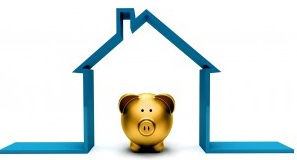When it comes time to buy an investment property, there’s a minefield of decisions and processes to navigate.

Making the right mortgage decisions is just one part of the process, but it’s crucially important.
Let’s not beat around the bush here, either: making the wrong financing choice could cost you tens of thousands of dollars over the life of your loan.
Perhaps even hundreds of thousands of dollars.
Finance guru Vivienne James’ iconic Women’s Money Book, first published in 1996, offered many handy hints to help women get finance approval, structure their loan and pay it off as quickly as possible, and her tips are just as relevant more than 20 years later.
To use her insider know-how to fulfil your property investment dreams, you’ll need to consider the following questions:
How much deposit will you need?
To determine the amount you’ll require for a deposit, first you’ll need to know the approximate purchase price of the property you’re investing in.
A deposit of 20 per cent is ideal if you want to avoid paying lenders mortgage insurance (LMI), plus in the current difficult mortgage market, it means you’ll have a broader range of lenders to choose from (and stand a better chance of securing a great interest rate or bonus features).
However, you may want to leverage your money even further by using a 10% deposit and taking out Lender's Mortgage Insurance - which protects the bank - not you!
The right course of action here really depends on your budget, your risk appetite and your goals.
The point is, however, that you need to have a handle on exactly what is it you want to do, before you can work out how much you need to save for your property investment deposit.
Don’t forget, the deposit isn’t the only cash you’ll need to part with up front.
You’ll also be investing in building and pest inspections, conveyancing, disbursements and other legal fees, stamp duty (which varies, depending on your state and the price of the property), strata fees (if buying an apartment or unit) and insurance.
Fortunately for investors, many of these expenses are tax deductible.
How much can you afford to repay?
If you bite off more than you can chew financially, the consequences could be disastrous – so don’t overcommit yourself.
The bank will assess your borrowing power based on your deposit, your income and your expenses.
They’ll factor in the expected rental income, and will then work out what you can afford to repay each month, using an assessment rate that is usually 2 percentage points higher than their current interest rate.
This means you’ll still be able to meet your repayments if interest rates were to rise a little.
We’re currently experiencing record-low interest rates, but this can’t go on forever – a rate rise in the future is inevitable (but probably not for a year or two yet.)
So, when calculating how much you can afford to pay, try some online calculators and play around with the interest rates, so you know where you’ll stand if the Reserve Bank should decide to increase the cash rate.
What’s better: a variable or fixed loan?
That all depends on your circumstances, and the interest rates available at the time.
If you’re able to fix a portion of your investment loan at a low interest rate, you’ll be pleased when rates rise and your mortgage repayments don’t.
However, some fixed rate loans come with some tight restrictions, like limits on the extra repayments you’re able to make.
They also don’t often come with an offset facility.
It’s best to discuss these features and benefits with your mortgage broker, who can do the sums and advise what the best option for you will be.
What on earth is an offset account?
An offset account can save you thousands of dollars worth of interest over the years, and is a great place to plant your savings or surplus funds.
The cash in your offset account reduces the loan balance – for example, if you have a $400,000 mortgage and $20,000 sitting in your offset account, when the interest is calculated it will be based on a figure of $380,000.
Because investment loans are tax deductible and owner occupied loans are not, it’s best to use offset loans with your personal home loan, whilst leveraging your tax deductible interest as highly as possible.
Even having your salary paid into an offset account can help, especially if your interest is calculated daily – for every day those extra funds sit in the offset, they are reducing the interest payable and helping you get the principal paid down faster.
Why investing is a good lifestyle choice
We’ve all heard the saying that rent money is dead money.
Well, Vivienne proposed a fresh angle on this phrase by suggesting that investing in an asset like real estate is a good lifestyle choice, as it stops that money from evaporating into thin air!
A mortgage is a form of forced saving – one that stops your hard-earned cash from disappearing on lifestyle choices or consumer goods over the years.
This, combined with strong long-term capital growth, makes property a solid investment in your future.


















